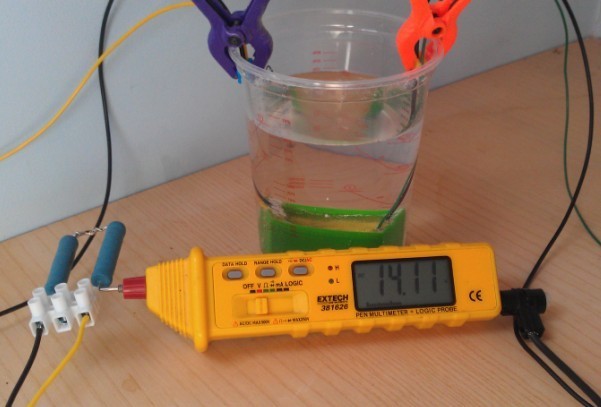Bath-time!
by Dermot Tynan in Microtransat
Posted on Monday, August 19, 2013 at 08:00
There are four power supplies on board the boat. The main voltage rail is 12 volts, give or take. The solar panels feed into that via two separate DC to DC converters. Ideally, they would provide a 13.7v "float" voltage to the main rail. That voltage is the ideal float voltage for a sealed lead-acid battery at 20 degrees C.
There are two problems with this. Firstly, it is unlikely the battery will be pegged at 20C. In the Northern latitudes, we can expect the night-time temperature to drop well below that level. Likewise, once the boat catches the trade winds, the battery temperature will increase dramatically. I have concerns that the temperature could get well up into the 40's, due to the fact that the battery is enclosed inside the hull.
As the battery temperature increases, the float voltage decreases. In an ideal world, I would use a temperature-compensated power unit for charging the batteries, but this isn't an ideal world. Choosing the best float voltage or charge voltage under the circumstances, is little more than a guessing game as I cannot accurately predict the average charging current or the hull temperature. Choosing 13.7 is a safe bet, but slightly too low.
As you can see from the image, the float voltage is actually closer to 14.1 volts. I wish I could say there was some solid science behind that. I decided to adopt the conservative voltage, and then 3D-printed a case for the PSU. I then installed the DC/DC converter in the case and filled it with West epoxy. If I'd had proper potting compound available to me, I'd have used that. However, I am absolutely sure that the West epoxy is immune to salt water, which is more than I can say about your average potting compound. Maybe they are, but I don't want to be the first use-case.
Interestingly, the epoxy seems to have changed the value of the DC output by almost half a volt. It has risen to 14.1, which is why that voltage appears on the DVM.
To test it, I added a known load and dunked the whole power unit into a glass of water (see picture). I left it submerged for a week or two, with no noticeable effects. It's safe to say, that DC/DC converter is ready for the hull.
Search
Upcoming Missions
- Galway Bay Loop, Waiting for Vessel Availability
Recent Posts
- May 2023 (1 post)
- April 2023 (1 post)
- March 2023 (1 post)
- February 2023 (2 posts)
- March 2022 (3 posts)
- March 2021 (1 post)
- August 2020 (1 post)
- May 2019 (1 post)
- April 2018 (1 post)
- November 2017 (1 post)
- April 2017 (1 post)
- November 2016 (1 post)
- September 2016 (1 post)
- August 2016 (1 post)
- January 2014 (2 posts)
- October 2013 (7 posts)
- September 2013 (1 post)
- August 2013 (3 posts)
- June 2013 (3 posts)
- May 2013 (4 posts)
- April 2013 (3 posts)
- March 2013 (9 posts)
- February 2013 (8 posts)
